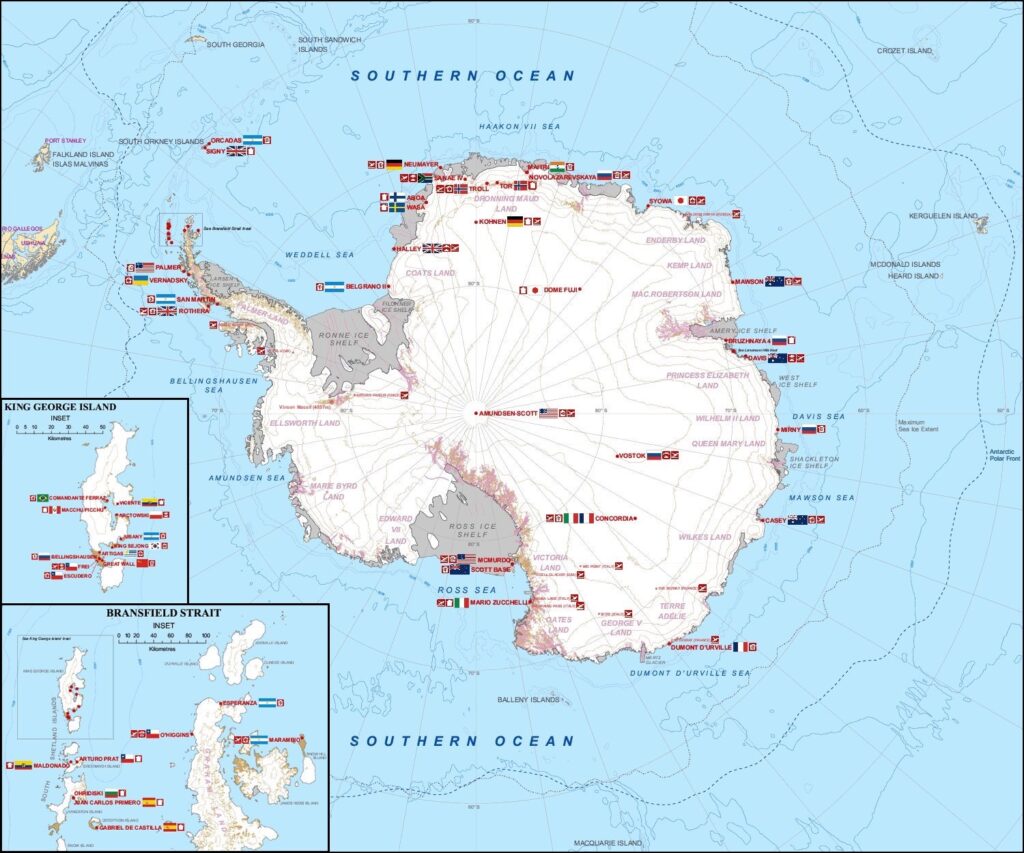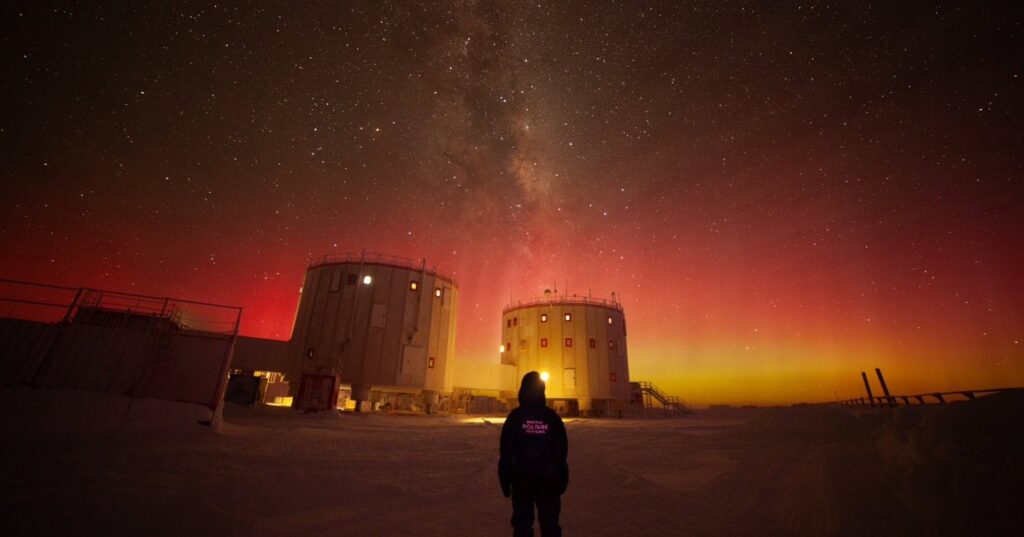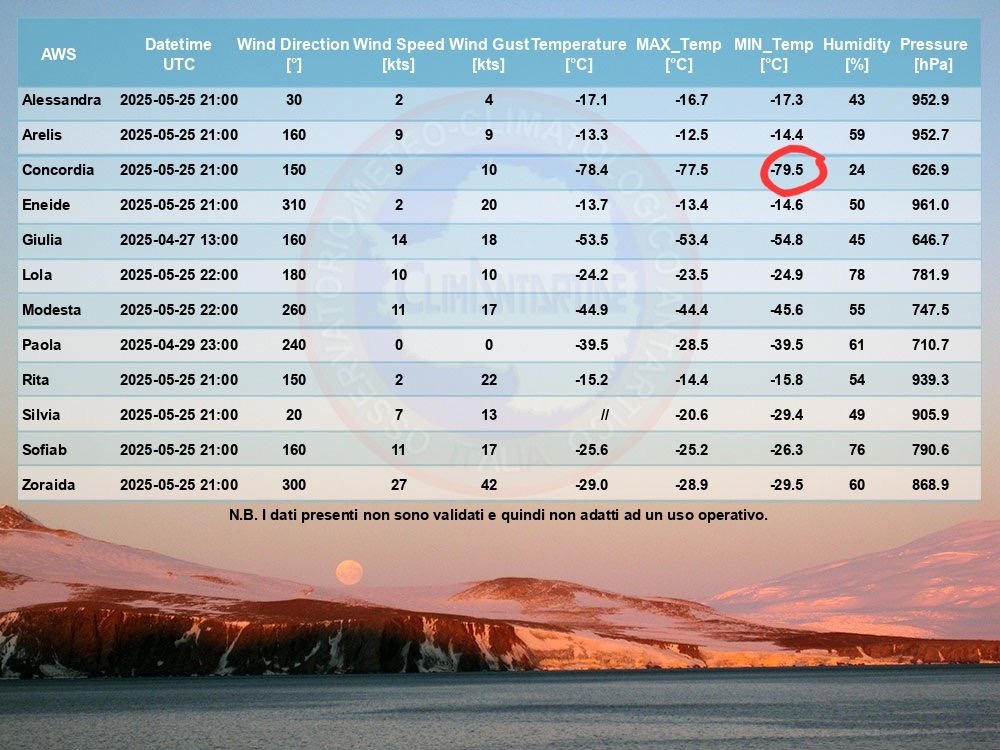In the last week, two research stations on the Antarctic plateau have experienced minimum temperatures very close to the -80°C threshold.
Concordia Station, a French-Italian research station perched at 3,233 meters above sea level on Dome C, recorded a minimum temperature of 79.6°C on 20 May followed by 79.5°C on 25 May. The station is situated 1,100 km inland from the coast and is approximately 1,670 km from the South Pole.
At the Russian Vostok Station 560 km away and located at 3,448 meters above sea level in Princess Elizabeth Land, a temperature of −79.6°C was recorded on 22 May. This station holds the record for the coldest ground-based temperature ever recorded: −89.2°C on 21 July 1983.

Antarctic Research Stations
The recorded temperatures at both stations were reported in social media posts and are awaiting confirmation from official sources.
At high-altitude and with a desert-like environment, Concordia has an annual precipitation of just 2–10 cm of snow. Its two cylindrical buildings, elevated on stilts to prevent snow accumulation, house 12–15 crew members in winter and up to 70 in the summer season (November to February). The pristine, high-altitude environment makes Concordia ideal for research in a variety of disciplines of glaciology, atmospheric science, astronomy, and climate research. The Antarctic Weather-Climatological Observatory has a vital role in not only collecting and monitoring weather data but also to undertake research in to the atmospheric conditions of the Antarctic Continent.


Weather data for Concordia Station 25 May 2025. Source: @pinturicchio_60 Data from climantartide.it
On 25 May, in addition to reporting the temperature of -79.5°C, the data for Concordia station shows a very low humidity figure of 24%. Antarctica’s interior is among the driest regions on Earth, with minimal annual precipitation. The extremely dry atmosphere at high-altitude sites like Concordia and Vostok reduces thermal blanketing, allowing temperatures to plumme
For example, Vostok’s record low of −89.2°C in July 1983 occurred under ideal cooling conditions, with clear skies and a cold air mass reducing infrared radiation from the atmosphere to the surface. Factors like clear skies, low humidity, minimal winds, high altitude, polar night, and prolonged radiative cooling during winter months drive these extreme cold temperatures below typical levels.
While the World Meteorological Organization does not recognize satellite measured temperatures for record purposes, some studies including the 2018 paper “Record low surface temperatures in the central Antarctic Plateau” referenced in Geophysical Research Letters report surface temperatures as low as −94°C (plus or minus 4°C) at Dome A – 4,093m and detected under clear-sky conditions.
The authors comment that the reported temperature is about as low as it is possible to reach, even under clear skies and very dry conditions, as heat radiating from the cold clear air is nearly equal to the heat radiating from the bitterly cold snow surface.